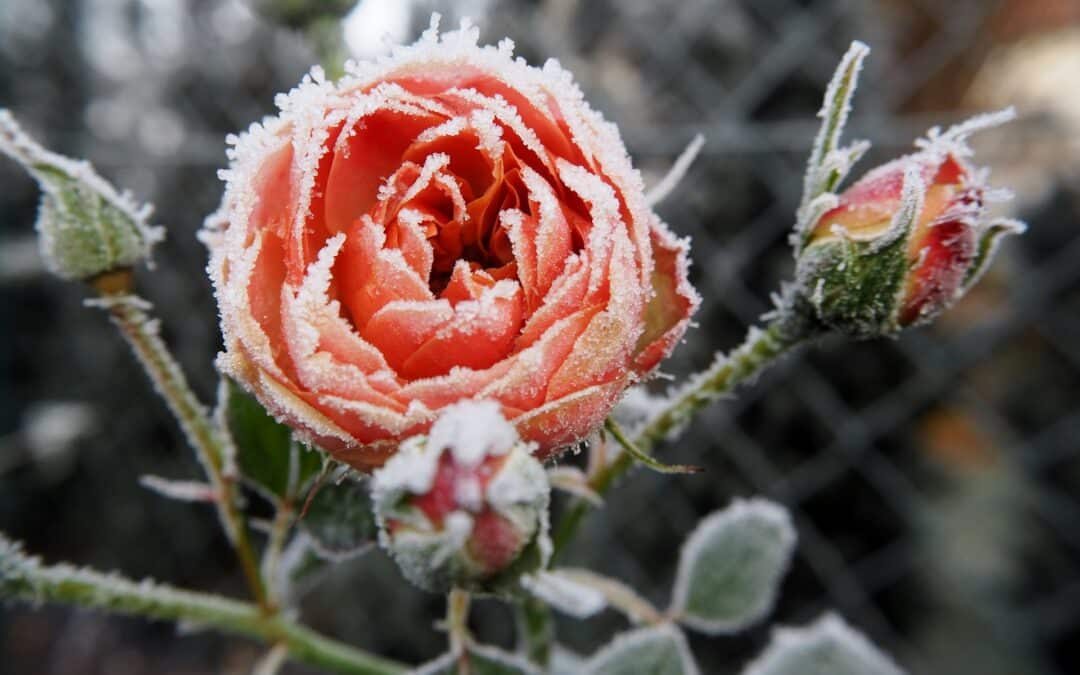Protecting your garden plants during the first freeze of the year is essential to ensure they survive and thrive. Here are some steps you can take to safeguard your garden:
- Monitor the Weather: Keep an eye on weather forecasts, especially during the fall and early winter. Knowing when the first freeze is expected will help you plan accordingly.
- Water Your Plants: Well-hydrated plants are more resilient to freezing temperatures. Water your garden thoroughly a day or two before the expected freeze. This helps the soil retain heat and provides some insulation to the roots.
- Mulch: Applying a layer of organic mulch, such as straw, leaves, or wood chips, around the base of your plants helps insulate the soil and protect the roots from extreme cold. Make sure not to mound the mulch against the plant stems, as this can promote disease.
- Cover Your Plants: Consider covering your delicate plants with various types of protective materials, like:
- Frost Blankets: These lightweight, breathable fabrics provide excellent protection against frost while allowing light and moisture to pass through.
- Bed Sheets or Blankets: In a pinch, old bed sheets or blankets can be used to cover plants, but they may not insulate as well as purpose-made frost blankets.
- Plastic Sheeting: Use clear or translucent plastic sheeting to create a mini greenhouse effect over your plants. Be sure to secure the plastic so that it doesn’t touch the foliage, as direct contact with plastic can cause damage from the cold.
- Cloches: These are small, transparent covers that fit over individual plants and protect them from the cold. You can make your own cloches using plastic bottles with the bottoms cut off.
- Remove Coverings During the Day: After the freeze has passed and temperatures have risen above freezing, be sure to remove any coverings or plastic sheeting to allow your plants to get sunlight and fresh air.
- Choose Cold-Resistant Plants: When planning your garden, select plants that are more tolerant of cold temperatures, especially if you live in an area with harsh winters. Local nurseries and gardening resources can help you choose the right varieties.
- Bring Potted Plants Indoors: If you have potted plants, consider bringing them indoors during a freeze. Potted plants are more susceptible to cold because their roots are exposed to the cold air.
- Install Windbreaks: Erecting windbreaks, such as burlap or wooden screens, can help shield your garden from cold winds, which can exacerbate the effects of freezing temperatures.
- Prune and Clean Up: Before winter sets in, prune any dead or damaged branches from your plants and remove any spent foliage. This reduces the risk of disease and allows the plant to focus its energy on healthy growth.
- Be Prepared: Have all the necessary materials, such as frost blankets, mulch, and coverings, readily available before the first freeze arrives so that you can act quickly.
Remember that not all plants can be protected from extremely cold temperatures, so choose your plants wisely and focus your efforts on those that are more susceptible to frost damage. By taking these precautions, you can help your garden survive the first freeze of the year and thrive throughout the growing season.

